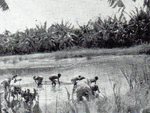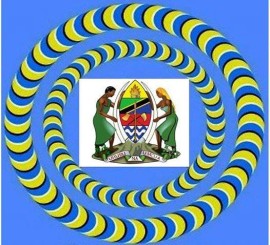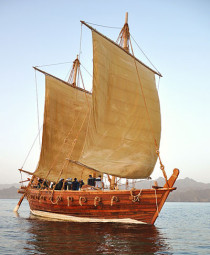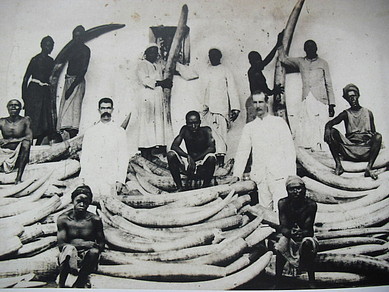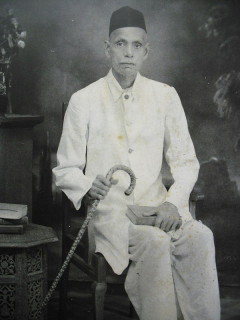Ewart Grogan
Ewart Grogan and origins of Chiromo name, How did a Nairobi suburb — and later a university campus — acquire the Malawian name Chiromo? The story of Chiromo is quite interesting for those who have been to the University of Nairobi.
But the South African climate was not favourable to Grogan and it was on his hospital bed that he saw an advert calling for settlers to East Africa. He jumped out of the bed and in 1902, and together with Edward Lingham, a Canadian, came to Kenya where they were shown land in Mau escarpment full of timber. Chiromo is also a story of love. In Nairobi, he chose the most wooded section of the emerging town. Here, some two rivers met reminding him of a village in southern Malawi named Chiromo where he had lost his luggage on his way to Cairo. Chiromo means “joining of the streams”. But that is half the story. Grogan bought the land where Chiromo campus now stands from Allen and Olivia Harries.
It was Grogan who, in 1906, stocked Kenya’s rivers with 40,000 imported trout — starting with Chiromo river. Most of Mount Kenya rivers owe their trout fish population to him. But today his legacy is best preserved by both Chiromo and Gertrude’s Garden Children’s Home, which he built in memory of his wife. He also owned the land formerly known as Grogan, now Kirinyaga Road.
But it starts in 1896 when Grogan volunteered as a soldier during the Matabele uprising in modern day Zimbabwe where he was injured. The injury, which almost ended his African adventures, took him to New Zealand where he recuperated. It was here that Grogan met Gertrude Watt who was smitten by his tales of triumph — some exaggerated and others fictional. Gertrude’s step-father was not amused and dismissed Grogan as a “useless fortune hunter.”
In 1898 the dashing British adventurer Ewart Grogan was head-over-heels in love—but he needed the approval of his beloved’s sceptical, aristocratic stepfather. To prove his worth, Grogan set out on an epic quest to become the first person to walk the length of Africa, two-year, 4,500-mile journey for love and glory “from the Cape to Cairo.”
Click on Photo to enlarge.
FROM THE CAPE TO CAIRO
Colonel Ewart S. Grogan , D.S.O, in his own words in an interview conducted in or around 1958 with F.S.
Joelson.
The one outstanding figure is Cecil Rhodes, who conjured with men and bewitched a strange medley of Jews, aristocrats, roughnecks, statesmen and tribal savages as his
following in a then seemingly hopeless attempt to develop Darkest Africa. He was kind to men in the Matabele War, when I was a mere “bloody trooper”-he felicitous term to those who for
five bob a day, a cupful of mouldy rice and a blown tin of a bully beef, swore and sweated in the (as it now transpires) ridiculous task of painting the map red. He inspired me to explore the route
from Cape to Cairo with a view to ultimate rail connexion, and later asked me to promise to devote my life to the development of British interests in Africa-a positive pragmatic and ruthless
sentimentalist.
-------------------------------------------------------------------------------
The Nairobi Incident
Where Imenti House stands today, bounded by Kenyatta and Moi Avenues, and Tom Mboya and Cabral Streets, once stood the courthouses of the Protectorate. It is outside that building, on a cold March 15th morning in 1907 that the following events take place.
Private enterprise at work in Kenya ( Lake JIPE project)
IT IS AN APPROPRIATE THAT THE LOCALITY WHENCE THE KING’S enemies were routed during the 1914-1918 conflict, should be the scene of a great, if not the greatest, private agricultural experiment in Kenya. Its conception is vast and could only be born of one who has his roots deep in the soil and whose heart is in sympathy with the wellbeing and welfare of the country—Colonel E. S. Grogan, D.S.O., who arrived in the Continent of Africa fifty and more years ago. When most men would consider that they had contributed than their quota to development and progress and had earned a well-deserved respite, he is still in harness.
The rainfall in this area is not sufficient to provide security and continuity in agricultural development. To circumvent this lack of co-operation on the part of Nature an Irrigation Scheme has been devised. A canal with the headworks situate on the Lumi River runs for some distance through the African Location and meanders along the contour for a total distance of some twenty-three miles. Thousands of acres can now be brought under cultivation and put to useful purpose. Man will not be the only beneficiary.
Already the beasts of the veld have found permanent water, Not content with this invaluable source of supply many dams have been constructed in the more inaccessible portions of the estate.
These will be available in time for watering stock, and help open up an area which would otherwise be non-productive.
A considerable area has already been irrigated and the flowing have been successfully produced. Maize, Beans, Castor Oil, Lucerne, Sunflower, Maringo root: production of oil), Sugar-cane, Sweet potatoes, Tara root, Pigeon peas, and a variety of vegetables. All these were established without the assistance of rain.
A serious attempt is being made to establish beef and dairy herds. The irrigation canal assures water for stock and grazing, but enemy number one—Tsetse—remains to be subdued and brought under control. Nothing daunted, two D8 Caterpillar Tractors were set to work hauling a three hundred foot wire hawser. At the time of writing, some thousands of acres have been cleared and the danger of tsetse fly thereby greatly minimised.
A small cross-Sahiwal herd was introduced in May 1950, and by natural increase the number has been doubled. Two calves were lost within three days of birth, the only casualties, and not one beast has died as the result of Tsetse Fly contact.
Another experiment upon which success has smiled is the breeding of Tilapia. This is the earliest attempt to cultivate fish on a large scale in Kenya. The breeding ponds cover an area of seventy two acres, the size of the ponds ranging between half to six and a half acres.
To ensure an adequate fresh water supply a canal ten miles in length was excavated and led in from the Lumi River. The ponds are stocked with some 300,000 Tilapia fingerlings. The fish are left some months to mature. A system of emptying the ponds in rotation is now in being and a regular supply of fish for the labour force is available.
In the early stages this experiment was handicapped through insufficient feeding but this has now been overcome An early venture was clearing a portion of the foreshore of Lake Jipe, and to ascertain what would grow on the reclaimed land. Encouraged by results, which proved the possibility of growing a wide range of plants, and seed crops to cotton, bananas and coconut palms, reclamation on a large scale is under way.
Most of the buildings are constructed of lime blocks with a coating of cement wash inside and out, the material for the blocks being excavated on the flats adjacent to Lake Jipe.
All these operations are in the initial stages and it is premature to write of results. The conception and vision which gave them birth, combined with a profound faith in the land in which we live, cannot but auger well for ultimate success.
TORRS HOTEL
NAIROBI.
Torr’s hotel was built in record time and completed in 9 months by George Blowers, the oldest establishment builder and suppliers of concrete in East Africa, their offices and works were
located on Sadler Street. Nairobi, Kenya
George Blowers proudly advertised in the East African annual 1930-31 that they claimed to have erected 320 tons of steel in 3 weeks, 510,000 bricks laid in 6 weeks. They also claim to have built
Corner House and Empire Theatre.
Torr’s Hotel was built by owner Colonel Ewart
Grogan, Torr’s opened for business in 1929. The building is a classic.Tudor style example in solid masonry with red brick facing, grouped, full height, arched windows to the ground floor, rectangular
casement windows to the upper floors, recessed entrance portal with embellished door frames, complete with a penthouse offering commanding views of the city centre.
On the ground floor was a one-of-a-kind
pear-shaped ballroom with an overlooking balcony on the first floor, featuring a hand carved balustrade and magnificent crystal chandeliers hanging majestically from the
ceiling.
Contrary to popular folklore, Torr’s Hotel was quite a decent establishment and the management maintained a strict code of conduct, including a formal dress code.
Because of the patronage of senior members of
the police, the hotel was regularly allowed extended operating hours up to 2am. The real party poopers were the aristocratic Happy Valley set who descended on the hotel after their favourite
establishments such as The Norfolk, The Stanley and Muthaiga Club closed early.
In 1958, Ewart Grogan, sensing the wind of
change blowing in Africa, sold the hotel to the Ottoman Bank and relocated to South Africa. The hotel business was closed and thereafter the building served as a bank on the ground, first and second
floors while the remainder was let out to tenants.
In 1969, Ottoman Bank sold its business in Kenya to National and Grindlays Bank (NGB).
Shortly afterwards in 1970, the Kenya government entered into an agreement with NGB in which a new bank known as Kenya Commercial Bank (KCB) was to take over all but two of NGB’s branches in Kenya, with the government owning 100 per cent stake in the new bank.
McMillan Castle
Lord William Northrop Macmillan: Man-Mountain
The cache, a small cylindrical plastic camo-container is hidden under a large rock at the Macmillan Grave site (to the south of his grave) about half way up the good (4WD) dirt track leading to the top of Ol Donyo Sabuk (Maasai: 'Big Mountain')
http://www.geocaching.com/geocache/GC4HDHM_lord-william-northrop-macmillan-man-mountain
McMillan Library and the jinxed Juja Farm
When the final story of the McMillan Memorial Library is written, it will be about a person - William Northrup McMillan — who bequeathed part of his wealth to the citizens of Nairobi — and had it protected by an Act of Parliament. That was the work of a genius.
Donald McMillan Ju-Ja Ranch British East Africa Big Game Hunting
Ju-Ja Ranch, where Mr. Roosevelt will stay for several weeks discussing with Mr. McMillan the final plans for his plunge into the wilderness, is twenty-three miles from Nairobi, the seat of government in British East Africa. The ranch is a domain of twenty thousand acres, covering a tract seven miles long that ends in a sharp angle at the confluence of the Athi and Tana rivers. Immediately north of Ju-Ja, in majestic view from the veranda, Mount Kenia pushes its snow-cap nineteen thousand feet high across the exact line of the equator. Between the ranch and Mount Kenia lie the swells of the big game wilderness, which runs on in a north westerly direction toward the great volcanic escarpment that shields Victoria Nyanza.
http://www.digitalhistoryproject.com/2011/10/donald-mcmillan-ju-ja-ranch-british.html
OLD TIME SALES SAFARIS
With so much enthusiasm and vigour we have seen and read a great deal on the Ugandan Railways and related items such as farming and other which the Colonial government had established/initially introduced to this mostly barren land of East Africa, from it many industries derived, that were unheard of and with it so many different types of enterprise/s flourished in many ways, way beyond peoples own expectations.
Well, here is a little bit of one of the many major Enterprises “Old Time Sales Safari”…a historic and renowned name started up in Mombasa, a Depot of the Boustead Brothers…..
It was in 1907 that my company, the British-American Tobacco Company, opened their first depot in East Africa with Mombasa as the Headquarters. Prior to that date, shipments of cigarettes and tobaccos were made direct to various trading firms through an importing agent, and after the opening of the Mombasa Depot the Boustead Brothers were appointed the Company’s agents with an agency in Zanzibar, at that time the most important of the East African ports and the centre of the piece-goods trade for this part of Africa.
I arrived in East Africa in 1908 at the time when the main business was in high-grade cigarettes and tobacco, but to make business worth-while it was necessary to attempt to establish trade with the African people who, in those days, smoked little else but small amounts of shag tobacco from Holland and tobacco of their own growing through long-stemmed pipes which they made themselves.
This early policy of my Company to open up the vast market of East Africa was made possible by widespread safaris, the first being of a pioneering nature to obtain particulars regarding population, methods of marketing, spending power of the primitive African people and so on. Our early safaris were to Larnu and Kismayu (both then part of British East Africa) along the Coast and inland to within easv reach of Mombasa.
The safari areas were then extended throughout the whole length and breadth of East Africa and in 191 o it was decided to form a sub-depot for German East Africa and appoint the German East African Company as agents. The Company also employed Germans as salesmen with an office in Dar-es-Salaam. But there were many difficulties in German East Africa and the progress made in that part of the East African Territories was slow.
As a result of the early pioneering safaris, it was decided to concentrate on the Lake Province of Kenya and Uganda, the latter being easily the most important potential market. For at that time the Uganda cotton industry was beginning to find its feet with the help of the Empire Cotton Growing Association which was responsible for the introduction and the building up of African-grown cotton in the early stages. Up to 1914, the opening up of outlets for tobacco and cigarettes in this huge market was slow, up-hill work, and a tobacco salesman’s main duties were teaching the African people to smoke what was called the “baridi cigarette”, establishing district agents and supplying direct to Indian- run dukas in the outlying areas.
During the First World War the supply of cigarettes and tobacco to the armed forces created another demand and helped to increase sales. After the War, selling campaigns were continued with an enlarged staff, and much safari work was undertaken.
In the Lake Province, safaris started from Kisumu and the organisation of a typical safari entailed arranging for porters to carry one’s tent and equipment, chop boxes and large quantities of free samples. The porters were engaged for the full length of the safari which might be from two to four weeks, and the number of porters was usually between 25 and 40, depending on the quantity of free samples to be carried.
These early safaris were done on foot. In some cases it was possible to stay at a rest camp or with Administrative Officers, but more often than not it was a question of pitching one’s tent and living in it for quite a while. In Uganda, tents were not used to the same extent as there were a large number of Government rest camps with very good rest houses. Facilities for safari work were usually better in Uganda and the roads were good.
After the walking safari came the bicycle safari, but this was little or no improvement as the time taken to cover a territory depended 011 the walking pace of the porters. However, the bicycle safari had its advantages in Uganda where porters could be changed from camp to camp and it was sometimes possible to do between 20 and 25 miles in one day by having two sets of porters.
The next development in safari work was the Triumph motor-cycle which gave a wider range, but was extremely hard work, and it was relief for most of our salesmen when it was possible to introduce motor-cars as the best means of carrying out sales safaris. It was with the advent of the motor-car that the old safari ideas died away.
But one of the most interesting safaris I ever did was just before the First World War when I trekked through Kenya, east of the Aberdares, to Meru, Nyeri and Nanyuki on a mule wagon with just a cook, personal boy and drivers. It was the first real attempt to open up that particular area. By Sir Charles Philips..
MP Shah
M.P Shah
Formally known as Parklands Nursing Home, M.P. Shah Hospital (Meghji Pethraj Hospital) was founded in early 1930s by prominent philanthropists to alleviate human suffering in the community. The founders had a vision of establishing a haven for the ill to experience quality care, compassionate service and inclusivity. With time, through hard work and painstaking endeavour, the vision broadened from a mere community nursing home to a fully-fledged facility that is now called M. P. Shah Hospital.
The vision, determination and selfless concern for the well-being of the community that characterized the nursing home’s beginnings still drive the hospital today. Today, M.P. Shah is a multi-specialty hospital covering every segment of medicine including renal services, total hip and joint replacements besides offering cancer treatment to patients throughout the East African region and across the African continent. The hospital is now one of the most respected and established institutions in Kenya providing professional medical, nursing and rehabilitative care. The focus has and always remains patient-centred care driven by the values of the Social Service League.
https://mpshahhosp.org/history/
https://www.meghraj.com/group-profile/history/
























